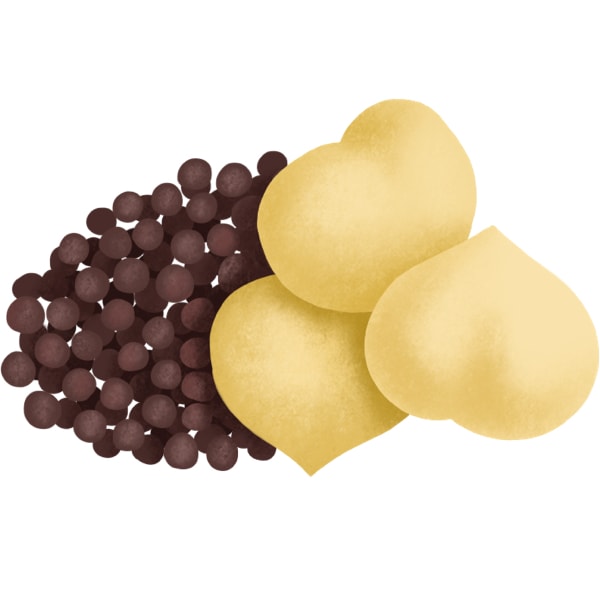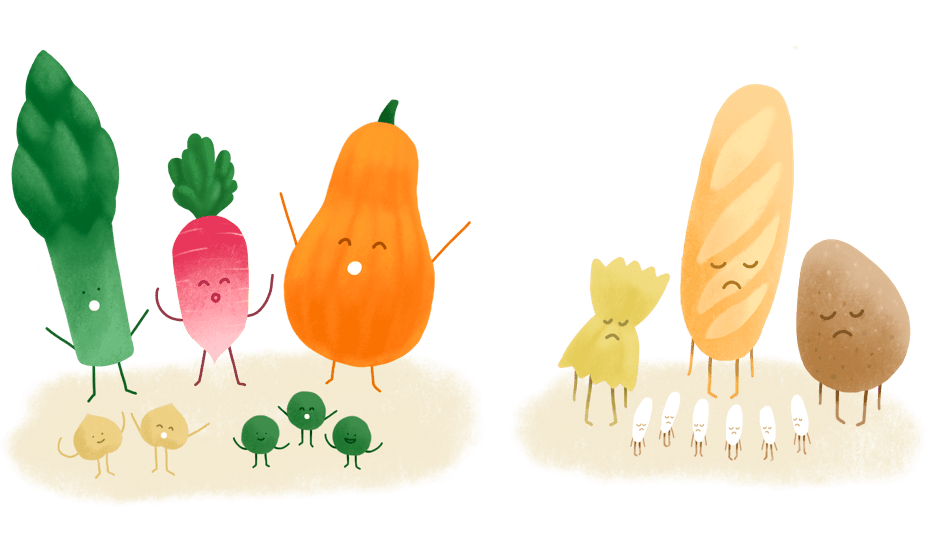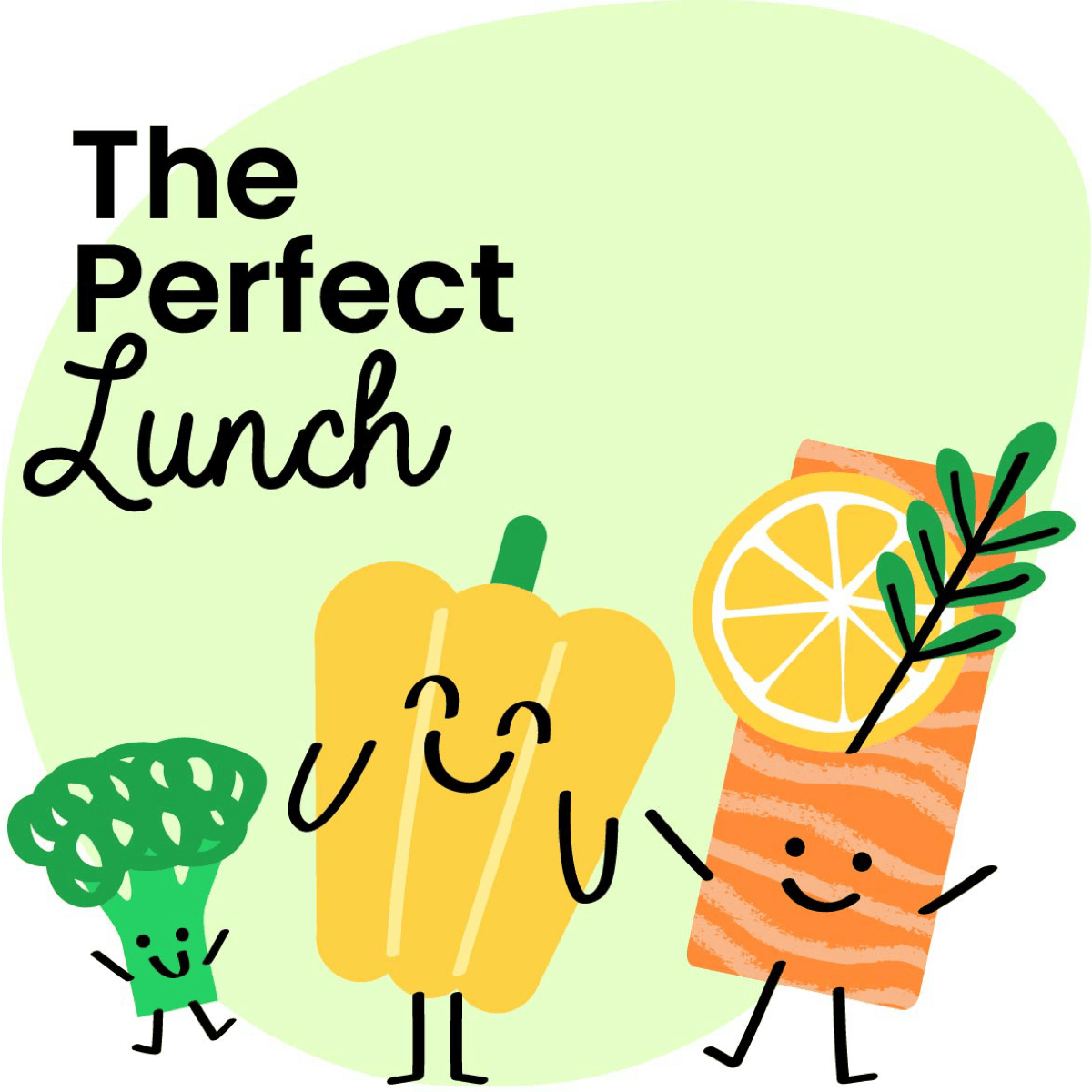The role of lunch is to top up your tank so you feel great all afternoon. We tend to supplement our meals with pasta or rice fo “fill us up” and keep us going for the rest of the day. But that’s a mistake! At lunchtime, it is better to load up on veggies and add a protein.
1 – You can never get too many vegetables!
The WHO (World Health Organization) recommends eating five servings of fruits and vegetables per day. The average German, however, only eats 3.4 servings of fruits and veggies a day, instead of the five recommended by experts. That is not a lot, especially knowing that we really should have at least seven or eight servings a day because of our modern lifestyles. A recent study shows that consuming 10 servings of fruits and vegetables per day (where one serving is three ounces) reduces cardiovascular disease by 28%.
Vegetables offer myriad benefits. First of all, when eaten for lunch, they promote feelings of satiety. Indeed, vegetables are very high in fiber, which absorbs water and makes you feel full. Furthermore, their low glycemic index encourages the slow release of energy in the body. Veggies will get you through the afternoon far better than the usual pasta or white rice.
Remember that it is important to vary your choices by trying to consume seven or eight servings of different fruits and vegetables to reap the benefits of each of them. Use color as your guide and try to eat as many colors as possible because, as a general rule, each color has its own positive effects on the body.
Aim to season your vegetables with a tablespoon of canola, camelina or walnut oil to harness the goodness of these oils and their high omega-3 content (see our article on fat).
2 – Set your sights on protein
Proteins prompt the body to produce dopamine, a neurotransmitter that plays an essential role in desire and motivation. That means eating protein at lunch is key to keeping your energy up in the afternoon.
In addition, because your body digests protein-rich foods slowly, you will feel satisfied longer. Protein also increases the time it takes to digest carbs, so it lowers their glycemic index.
You can opt for a serving of plant or animal protein, such as:
 | 4 oz fish or poultry |
 | or 2 eggs |
 | or 4 oz tofu |
 | or 5 oz cooked legumes (lentils, chickpeas, etc.) |
3 – Eat carbs sparingly
Contrary to popular opinion, carbohydrates (bread, pasta, rice, etc.) are not crucial at lunchtime, just as with breakfast. In fact, refined sugars have a high glycemic index (see our article on this topic), meaning they cause blood sugar to rise quickly. In response, our body secretes insulin, which then causes the amount of sugar in the blood to plummet. What are the consequences of these fluctuations in blood sugar? We experience fatigue and an overriding need to eat something sweet to restore the sugar levels in our blood! That is why experts recommend limiting sugar intake in the morning.

It is fine to round out your meal with carbs, provided you choose the right ones and eat them in moderation. Choose carbohydrates with a low glycemic index, such as whole grains (brown rice, whole wheat pasta, etc.). “Whole grain” means that the flour used to make the food contains all of the grain, including the hull. That is why whole grains have more fiber and a lower glycemic index. Limit your servings to three ounces of cooked pasta or rice (about four to six tablespoons).
Legumes (lentils, chickpeas, peas, beans) are an excellent form of carbohydrates because they also contain protein.
As a result, you can opt for a serving (1.5 oz raw or 3 oz cooked) of whole-grain starch (e.g. brown rice, whole-grain pasta, quinoa or buckwheat). If you take this route, you should reduce your animal protein serving by 20% to 30%.
The perfect lunch
- As a starter, depending on your tastes and habits: a veggie-packed salad, soup or cold fish dish
- As a main course: a serving of animal or plant protein, such as
- 4 to 5 oz fish, seafood or shellfish
- or 4 to 5 oz free-range poultry
- or 4 oz high-quality meat (fillet of pork, beef, veal or offal) no more than once a week
- or 5 to 6.5 oz cooked legumes (lentils, chickpeas, high-quality soy patties)
- On the side: veggies — as many and whichever ones you like. Season with one tablespoon canola, camelina or walnut oil.
- Optional: one serving (1.5 oz raw or 3 oz cooked) of whole-grain starch (e.g. brown rice, whole-grain pasta, quinoa or buckwheat). If you choose this option, you should reduce your animal protein serving by 20% to 30%.
- For dessert, depending on your taste:
- 1 vegan yogurt
- or 1 unsweetened goat or sheep milk yogurt (if you eat dairy)
- or 1 to 2 squares of organic dark chocolate (70% cacao) or even raw cocoa nibs if you like them
- or .25 to .7 oz nuts.
- Dagfinn Aune, Edward Giovannucci, Paolo Boffetta, Lars T. Fadnes, NaNa Keum, Teresa Norat, Darren C. Greenwood, Elio Riboli, Lars J. Vatten, Serena Tonstad. Fruit and vegetable intake and the risk of cardiovascular disease, total cancer and all-cause mortality–a systematic review and dose-response meta-analysis of prospective studies. International Journal of Epidemiology, 2017; DOI: 10.1093/ije/dyw319
- Tavoularis G., Hébel P., «Fruits et légumes : les Français suivent de moins en moins la recommandation», in: Consommations et modes de vies, CREDOC, n°292, ISSN 0295-9976, Juillet 2017
- Yuka's article about proteins: https://yuka.io/en/basics/proteins
- Yuka's article about carbohydrates: https://yuka.io/en/basics/carbohydrates





